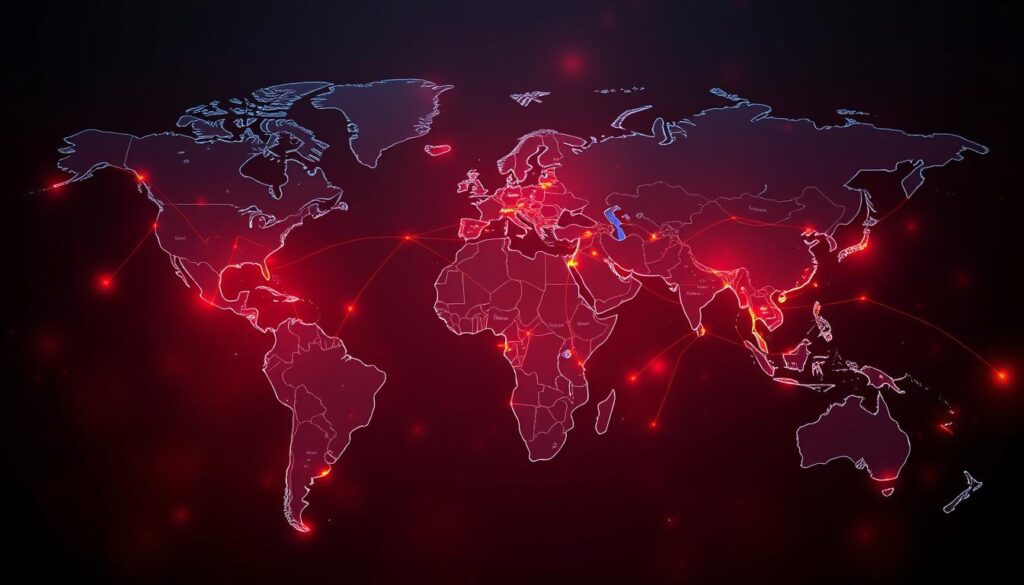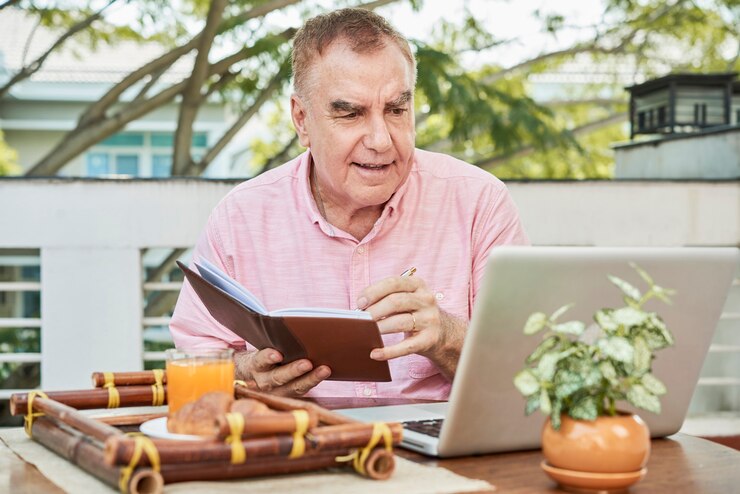Did you know that in 2018, people sent over $529 billion across borders? This money is crucial for families in developing countries. It helps with basic needs, education, and healthcare. But sending money used to be slow and costly.
Blockchain technology is changing this. It uses new ways to make sending money safer and cheaper. This means people can send money without paying high fees or waiting a long time. We’ll see how blockchain is making sending money across borders better for everyone.
Key Takeaways
- Blockchain technology significantly reduces transaction costs in remittances by enabling direct peer-to-peer transactions, eliminating the need for multiple intermediaries.
- Blockchain enhances the security of remittance transactions through cryptographic techniques, creating a secure and tamper-resistant chain of transactions.
- The transparency of blockchain ensures that every transaction is visible on the distributed ledger, fostering trust among users and reducing the risk of fraud.
- Blockchain-based remittance solutions offer faster processing times, often within minutes, compared to the days required for traditional international bank transfers.
- Blockchain-powered cross-border payments are accessible to anyone with an internet connection, regardless of their location, promoting financial inclusion.
Understanding Blockchain Technology
Blockchain technology is changing the game in digital finance. It’s a way to keep track of data that’s secure and open. Unlike old financial systems, blockchain uses a network of computers to record data. No one person or group controls it all.
Decentralization: A Key Feature of Blockchain
Blockchain is all about being decentralized. It uses many computers, called nodes, to check and record transactions. This way, there’s no single point of failure or corruption.
Transparency and Security in Blockchain
Blockchain is super transparent. Every transaction is open to the public, making it easy to check. This builds trust and ensures no one can mess with the data.
Blockchain is also super secure. Each block of data links to the next, making the chain strong. Trying to change the data is hard because the network catches it right away.

Blockchain stands out with its unique mix of decentralization, transparency, and security. This makes it great for new uses in things like sending money across the globe, managing digital assets, and smart contracts.
Global Remittances: An Overview
Remittances are the money or goods sent back by migrant workers to their home countries. They are crucial for the global economy. For many countries, these funds make up a big part of their GDP. They help support families with basic needs, education, and healthcare.
Before, sending remittances was mainly done through banks and money transfer services. Now, these funds are a key source of income, even more than aid from international groups. Remittances are vital for keeping economies stable, reducing poverty, and growing the financial sector.
| Statistic | Value |
|---|---|
| Global average cost of sending USD 200 in remittances | 6.9% |
| SDG 10 C goal: Reduce the cost of remittances to less than 3% by 2030 | 3% |
| Goal: Eliminate remittance corridors with costs higher than 5% by 2030 | 5% |
| Remittances in 2018 to low and middle-income countries | USD 529 billion |
| Remittances in 2018 were three times higher than official development assistance (ODA) | 3 times |
| Remittances in 2018 nearly reached the level of foreign direct investment flows | Near foreign direct investment |
| Migrants estimated to transfer USD 8.5 trillion to developing countries between 2015 and 2030 | USD 8.5 trillion |
| Projected amount to be saved or invested from the transferred amount | 25% |
Migration is a big part of our connected world, driven by economic differences and job chances abroad. Blockchain tech could change remittances, making them faster and cheaper. This could cut down on the high fees and exchange costs of old ways.

Governments see how important remittances are and work to make it easier to send money. Migrants use formal ways to send cash, helping banks and transfer services grow.
Challenges in Traditional Remittance Systems
Sending money across borders has many challenges. High transaction fees are a big issue. In some places, these fees can be very high, leaving less money for the people who need it.
The process is also slow, taking days to complete. This can be a big problem when money is needed fast, like in emergencies. Lack of transparency is another big issue. People often don’t know where their money is or what fees they’re paying. This makes it hard to understand the true cost of sending money.
Getting to remittance services can also be hard. In some areas, there’s no banking infrastructure. This makes it tough for people to send and receive money.
High Transaction Costs
Traditional ways of sending money can take a big chunk out of your money. Fees can be up to 10% of the total amount. This means the person getting the money gets less than you intended.
Slow Transfer Times
Sending money can take days or even weeks. This is a big problem if the money is needed right away. It’s especially true for emergencies or urgent financial needs.
Lack of Transparency
It’s hard for people to track their money and understand the fees. The lack of clear information can cause a lot of frustration. Both the sender and the receiver can feel unsure about what’s happening with their money.
| Challenge | Impact |
|---|---|
| High Transaction Fees | Reduces the amount received by the beneficiary |
| Slow Transfer Times | Delays access to funds, especially in emergencies |
| Lack of Transparency | Causes uncertainty and frustration for senders and recipients |
These problems with the traditional remittance system have led to new solutions. Blockchain technology is one example. It aims to make sending money faster, cheaper, and more transparent.

The Impact of Blockchain on International Money Transfers
Blockchain technology is changing how we send money around the world. It makes sending money easier, safer, and cheaper. This is a big deal for the global remittance industry.
Lower Transaction Costs
Blockchain cuts down transaction costs a lot. It lets people send money directly, skipping middlemen. This means less money lost to fees, which can be up to 10% of the total amount.
Enhanced Security and Transparency
Blockchain makes sending money safer and clearer. Every transaction is encrypted and linked to the last one, making it hard to change or hack. This gives both senders and receivers peace of mind. They can also check the details of their transactions easily.
A report by the Boston Consulting Group says blockchain could cut costs in trade finance by 10-to-15 percent. It also says we might see blockchain in trade finance in about five years. IBM’s financing unit believes blockchain could speed up solving financial disputes from 44 days to just 10 days.
| Blockchain Impact | Percentage Reduction |
|---|---|
| Operational and Compliance Costs in Trade Finance | 10-15% |
| Dispute Resolution Time in Financial Transactions | 77% |
Blockchain is changing how we send and receive money across borders. It offers big savings and makes transactions safer and clearer.
Blockchain-Based Remittance Solutions
Blockchain technology has changed the game for sending money across borders. It uses decentralization, transparency, and security to make sending money better. This has changed how we think about sending money around the world.
Use of Cryptocurrencies or Stablecoins
Cryptocurrencies like Bitcoin or Ethereum make sending money faster and cheaper. They cut out middlemen and lower fees. Stablecoins, tied to real money, add stability for everyday use while keeping blockchain’s benefits.
Blockchain Technology for KYC Requirements
Blockchain also makes the know-your-customer (KYC) process easier. It uses its secure nature to automate and speed up KYC. This makes sending money more accessible to those without bank accounts.
These blockchain solutions could change how we send money around the world. They offer quick, cheap, and clear payments. As the tech grows and rules catch up, more people will use these new ways to send money. This will help more people get involved in the financial world.
| Key Benefits of Blockchain-Based Remittance Solutions | Challenges to Overcome |
|---|---|
| Lower transaction costs Faster transaction times Increased transparency Enhanced security and fraud prevention Accessibility for the unbanked | Regulatory uncertainty Last-mile delivery challenges Scalability and energy consumption concerns Balancing transparency and user privacy |
Barriers to Blockchain Adoption in Remittances
Blockchain-powered remittance platforms have many benefits, but they face big hurdles. One major issue is the unclear rules about blockchain and cryptocurrencies in remittances. Governments are figuring out how to manage these new technologies. This lack of clear rules makes it hard for banks and people to use them.
Another big problem is getting the money to the person it’s meant for. This is tough, especially in places far from cities or where banks don’t reach. These areas often have poor financial services.
- Regulatory uncertainty: Governments are still making rules for blockchain and cryptocurrencies, causing confusion and slowing things down.
- Last-mile delivery challenges: It’s hard to get money to people in remote places without good banking services.
To make blockchain more popular in sending money around the world, we need to tackle these issues. We need to work together. Governments, banks, and tech companies must come together. They should create clear rules, help more people get financial services, and solve the last-mile problem.
The Future of Blockchain in Global Remittances
Blockchain technology is changing the way we send money across the globe. It cuts costs, boosts security, and makes things clear. This could make sending money easier and better for millions, especially in poor countries.
For this to happen, governments and big groups need to work together. They must make rules the same everywhere and help more people get to the bank. This teamwork is key to making blockchain a big deal in sending money.
Investing in new ideas and research will bring better blockchain-based ways to send money. These new ways can help more people get money, fight poverty, and support sustainable growth everywhere.
The future of sending money with blockchain looks promising. We’ll see lower costs, better security, and more teamwork across the world. This could make the way we send money better for everyone.
| Metric | Value |
|---|---|
| Global average cost of sending USD 200 to low and middle-income countries (2018) | 6.9% |
| SDG 10 target for remittance costs by 2030 | Less than 3%, with no corridors higher than 5% |
| Remittances to low and middle-income countries (2018) | USD 529 billion |
| Projected remittance transfers to developing countries (2015-2030) | USD 8.5 trillion, with USD 2 trillion saved or invested |
Conclusion
Blockchain technology is changing the way we send money across borders. It tackles the problems of old ways of sending money. It makes transactions cheaper, safer, and easier to follow.
This tech could make sending money a key part of economic growth and getting more people into the financial system. But, it will take work from governments, banks, and tech companies to make it happen. They need to get past legal issues, improve how money reaches people, and make sure more people use these new ways.
Blockchain is bringing new ideas to the money transfer world. It could fix old problems and help create a fairer, easier way to send money globally. As more people start using blockchain for sending money, we can expect big changes. These changes will make sending money across borders easier and help people and communities all over the world.
FAQ
What is the impact of blockchain on international money transfers?
Blockchain technology is changing the way we send money across borders. It makes sending money cheaper, safer, and easier to use. This is because it cuts out middlemen and makes transactions clear and secure.
How is blockchain changing the way international transfers are conducted?
Blockchain lets people send money directly to each other without needing banks. This cuts costs and makes transactions safe and clear. It’s like a digital ledger that keeps track of every money move.
How is blockchain technology being used in the remittance industry?
Blockchain is being used to make sending money easier and cheaper. It uses digital money like cryptocurrencies for sending money across borders. It also makes it easier to know who you’re dealing with, making things more efficient.
What are the blockchain-based money transfer services available?
There are many new services that use blockchain for sending money. Companies like Ripple offer fast, cheap ways to send money around the world. They use digital money and make it easy to send money without many steps.
How is Ripple using blockchain for money transfers?
Ripple is a company that uses blockchain for sending money fast and cheap. They use their own digital money, XRP, to make sending money easy and quick. This is a new way to send money that’s cheaper than old methods.
How does blockchain technology impact cross-border payments?
Blockchain makes sending money across borders cheaper and safer. It cuts out middlemen and makes transactions clear. This means sending money is faster and cheaper, helping people around the world.
How are cryptocurrencies used in money transfers?
Cryptocurrencies like Bitcoin and Ethereum make sending money cheaper and faster. They cut down on fees and make sending money quicker. This is good news for people sending money to family and friends abroad.
What are some blockchain-based remittance platforms?
There are many platforms that use blockchain for sending money. Companies like Ripple and Stellar offer new ways to send money. They use blockchain to make sending money cheaper, safer, and easier.
How are decentralized money transfer services using blockchain?
Decentralized services use blockchain to send money directly between people. This means no middlemen and lower fees. It’s a new way to send money that’s fast, cheap, and secure.
How is bitcoin impacting the money transfer industry?
Bitcoin and other digital money are changing how we send money. They make sending money fast, cheap, and secure. This is especially good news for people sending money to family and friends abroad.
How is blockchain technology being used in the finance industry?
Blockchain is being used in many parts of finance, not just sending money. It makes financial transactions faster, safer, and clearer. This helps make finance better and less dependent on old ways.
How does blockchain technology ensure secure transfers?
Blockchain makes sending money safe by using a secure network and encryption. Each money move is linked to the last one, making it hard to change. This gives both the sender and the receiver peace of mind.
How is blockchain technology being used in global remittances?
Blockchain is changing global money sending by making it cheaper, safer, and easier. It uses digital money and makes sending money faster. This helps people send money to loved ones without high fees.
How does blockchain reduce the cost of international money transfers?
Blockchain cuts costs by letting people send money directly without middlemen. This means lower fees for the people getting the money. It’s a big win for families and workers sending money abroad.
How is distributed ledger technology used in international money transfers?
Distributed ledger technology, like blockchain, makes sending money better. It’s secure and keeps track of money moves clearly. This means less need for middlemen and more visibility for everyone involved.
How is blockchain technology being used in cross-border payments?
Blockchain is changing how we pay across borders by offering a new way that’s fast, cheap, and secure. It uses digital money and makes sending money easier. This is good news for people and businesses sending money abroad.
What is the future of blockchain in the money transfer industry?
Blockchain has a bright future in sending money. It makes things cheaper, safer, and clearer. To make the most of it, we need to work together to solve challenges and make rules.
What are the benefits of using blockchain for international money transfers?
Using blockchain for sending money has many benefits. It’s cheaper, safer, and easier to use. It lets people send money directly, cutting out middlemen and lowering fees. This makes sending money more secure and clear.
How is blockchain technology transforming financial transactions?
Blockchain is changing finance by offering new solutions that make transactions better. It’s used in many areas, not just sending money. This technology makes finance more reliable and accessible for everyone.
How is Ethereum being used in international money transfers?
Ethereum is being used in sending money across borders. It lets people send money fast, cheaply, and securely. Some services use Ethereum’s smart contracts and digital money to make sending money easier.



